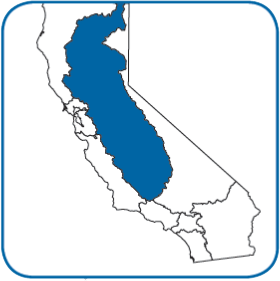About Us
Our Mission
To preserve, enhance, and restore the quality of the Central Valley’s water resources for the protection of the environment, public health, and all beneficial uses for the benefit of present and future generations.
Our Vision
External Vision
A Central Valley where aquifers and surface waters meet or exceed water quality necessary to support all beneficial uses, where all communities have access to safe, affordable, and resilient water supplies, and where all people have a shared responsibility for water quality that is sustained through multi-generational stewardship that begins in the homes and classrooms throughout the region.
Internal Vision
A well-run organization with strong and dutiful executive leadership where technical, managerial and administrative staff know that their work is highly valued and where a culture of public engagement, collaborative problem-solving, transparency and outreach is fostered by management.
We Value...
- Integrity
- Professionalism
- Collaboration
- Diversity, Inclusion, and Anti-Racism
- Water Quality Protection
- Beneficial Outcomes for All
- Public Health
- Environmentalism
- Transparency
- Economic Fairness
- “Generational” Preservation of Water
- Community
- Adaptability
- Commitment to do better for the environment
Our Duty
The primary duty of the Regional Board is to protect the quality of the waters within the Region for all beneficial uses. This duty is implemented by formulating and adopting water quality plans for specific ground or surface water basins and by prescribing and enforcing requirements on all agricultural, domestic and industrial waste discharges. Specific responsibilities and procedures of the Regional Boards and the State Water Resources Control Board are contained in the Porter-Cologne Water Quality Control Act.
The Central Valley Regional Water Quality Control Board is the largest and most diverse region in California, stretching from the Oregon border to the northern tip of Los Angeles County - about 60,000 square miles or nearly 40 percent of the state. It includes all or part of 38 of California's 58 counties and nearly 80 percent of the state's irrigated agricultural land.
In total, water from the Central Valley provides more than 50 percent of the state's total water supply, provides drinking water for 25 million Californians and irrigation for millions of acres of farms in and out of the valley.
Key water quality program areas in the Central Valley
- Agriculture and ag-related industry
- Animal feeding operations including dairies
- Municipal and industrial waste disposal in water and on land
- Storm water runoff
- Timber harvest operations
- Abandoned mines
- Pollution cleanup




